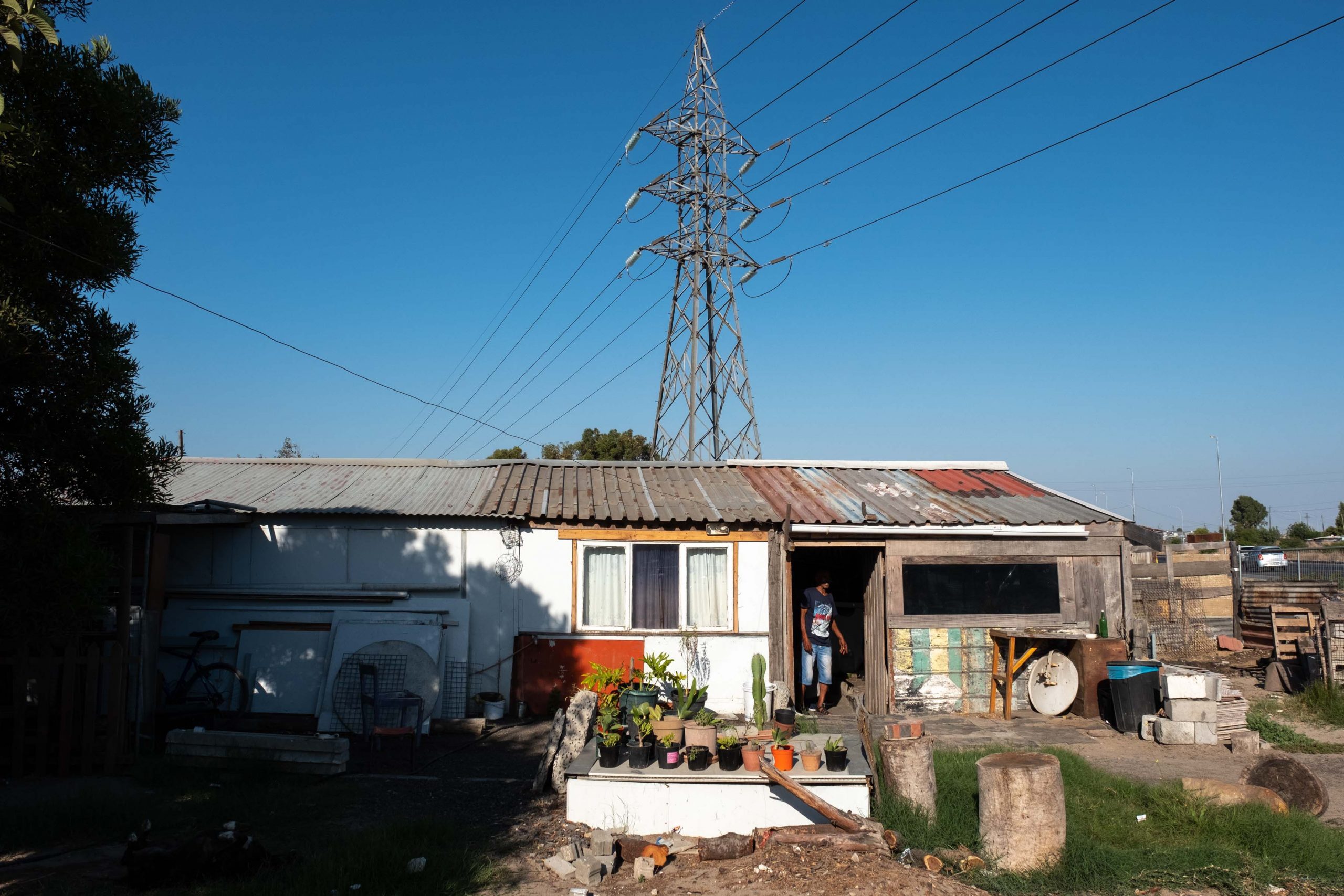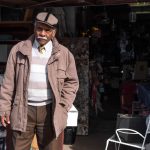Dispossession of the Adriaanse family home
A family still seeks restitution after the apartheid state forced them off their farm and the current government used the ground for the Blikkiesdorp “temporary relocation area”.
Author:
18 September 2019

When part of the N2 was built, winding through Cape Town, Danny Adriaanse, 64, was a young boy living on a big farm. It was apartheid, and the the state had already chased the Adriaanse family from their land once. The national highway was built straight through the family’s farm, forcing them out of their home and to the Klipfontein Mission Station. They never recovered. It was the start of the family’s undoing.
The Adriaanse family has always been a big one. They were 12 siblings living on the 92 hectares of land that belonged to their maternal grandfather. In Danny’s distant memory, the farm, located in an area called Driftsands near the Cape Town International Airport, was where they lived in reasonable comfort. His memory of the home transforms him into a little boy craning his head up to his grandfather.
“Wow, I tell you. It was made of dolomite stone,” he remembers. “There was no brick and mortar. It was just man-chopped stone. Look, I can still vividly remember my grandfather had a separate section of the house where he would repair shoes. He was a cobbler. I can still remember the small little storage room where he would store the dynamite sticks for when he blasted the limestone by the quarry. We were happy. We lived from the soil. We had livestock.”

His brother Ernest, 71, the eldest of the siblings, has a different memory. There’s a resignation in Ernest now, but once he was a boy that worked gruellingly hard for his family’s survival. As a youngster, Ernest was forced to work as a woodcutter when his father became ill.
Over the decades, he worked in different jobs, but eventually always returned to the intense laborious hacking and heaving of wood cutting. He began work at the age of nine, and by the time he was 14, he found himself working in a weapons manufacturing plant after his father lied about Ernest’s age. Ernest has no memory of the comfort and security Danny holds dear.
“My growing up years weren’t happy, but a person must try to make the best,” Ernest says.
Related article:
On the ground where the Adriaanse farm in Driftsands was built, an infamous settlement called Blikkiesdorp rose, one shack at a time in the early 2000s. The City of Cape Town created Blikkiesdorp, meaning “Tin Town”, in Delft as a “temporary relocation area” in the run up to the World Cup in 2010 when mass evictions were part of the preparation for the global spectacle. To this day, Blikkiesdorp still exists and has become one of the most vulnerable and dangerous areas in Cape Town.
Airports Company South Africa (Acsa) has earmarked Driftsands for the expansion of the airport, but the dry planes of the area remain largely unoccupied and unused. The hectares of unkempt bush are easy to miss along Symphony Way, a main road in Delft, where Danny remembers his grandfather’s farm once existed. Although large portions of the land remain bare, the Department of Public Works, which owns the land, has refused to release it back to the family.
But Adriaanses are fighting to turn back the clock and restore their dignity.

This land was ours
Before the N2 was built, and townships developed along the sides of its formidable structure, the Cape Flats was farmland.
One offramp from the N2 near the airport is called Duinefontein Road. It was in these vast hectares that the Adriaanses lived on Duinefontein farmlands. When the farm disappeared under a surge of development and the rise of townships along the planes of the N2, the only trace of its existence was the street named after it.
“We lived there very nicely,” says Danny. “We had everything there. We had gardens, we had subsistence farming. We had vegetables, we had cattle and livestock. My grandfather had beehives, he would sell honey to the people. If I take you there now, you will still see the ruins of the house I was born in.”
The family was forced to move when the airport was built on Duinefontein land in the 1950s. They thought they were giving up land for national importance. They packed up and lived in Driftsands with their mother’s father.
“My grandfather was chased away there by the Duinefontein [Road]. It was before my time. When I was about five years old, I used to go into that bush there by the fence where the airport is situated now. We used to go in there and chop wood. I could still see the ruins of my great-grandfather’s place there,” Danny says.
Related article:
Today, there’s no trace of Duinefontein farm, but through research at the title deeds office archives, Danny found his family name mentioned in the historical records. The deeds office also provided evidence of the family’s stake at Driftsands.
“I still found in those books evidence of my family’s existence,” Danny says. “It’s fascinating if you go into the history and see how our people were economically disadvantaged because they were just chased away.”

Most of Danny’s formative years as a young boy and teenager were spent at Driftsands. But soon, he would be ripped from the area and forced to drop out of school to find work. The family was forced out of Driftsands and came to live at the Klipfontein Mission Station. The vast barren land just outside Philippi is legally owned by the Southern Africa Methodist Church. The family lived in poverty. Danny’s siblings still live in unserviced shacks at the mission station.
When the Adriaanse family came to live in the area, they were among five families active in the community who have since been linked to the land.
But they are tired of living in deprivation in Klipfontein. They want their “ancestral land” back.

Land claims
In 1998, when queues of black South Africans trailed into the doors of government offices filling in paperwork for restitution, the Adriaanses were there, too. Danny made a claim for a parcel of land identified as Farm 544 in Delft. Driftsands, which had been broken into various portions of property, had been renamed. He has waited for reparation since then.
Over the past 21 years, the land commissioner’s office has rescinded four offers of restitution to the family. Danny remembers each offer, and the land that his family would have been excited to have as their own.
But in each case, the state said they could not release the land, and the offer was withdrawn. Danny has written to the land claims office, MPs in the Western Cape legislature and even Democratic Alliance leader Mmusi Maimane to appeal for help.
Related article:
In February, deputy minister of Public Works Jeremy Cronin informed the Adriaanse family that Driftsands would not be released for restitution because, first, Blikkiesdorp is on the land; second, Acsa has requested that some of the land be used to expand a landing strip at Cape Town International Airport and, lastly, some hectares form part of a wetland where electricity can’t be installed.
Cronin referred the claim back to the land commissioner’s office to “identify alternative land” for the Adriaanse family.
“We feel very disappointed and despondent because we never thought it would take this long,” Danny says. “We never thought that this new South Africa would be in such a state where you will have to wait more than two decades for restitution.”

A bitter battle
The lack of restitution has also left a sense of bitterness in the Adriaanse family. They now see black African families as a threat to their own journey to restitution. The family have watched as impoverished black South Africans have been forced to live in shack settlements, such as Blikkiesdorp. They have also watched as RDP houses rise along the N2 and neighbouring settlements, such as Marikana, receive more attention than their own plight in Klipfontein less than a kilometre away.
They believe that government has treated black African people better than the “so-called coloureds” and their anger has made them racist. In the competition for land resources for restitution, Danny feels his family has been left behind.
“You don’t see a black claimant there by the land commissioner coming to find out about a claim that was lodged in the late 1990s. They all settled,” Danny says angrily.
During the apartheid era, Ernest worked with the police service. He knew he was complicit in the atrocities of the regime but he cared most about having a job.
Related article:
In Klipfontein, shack settlements are rising along the edges of the mission station, and the Adriaanses are watching as more black African people enter into land they believe belongs to them and the original inhabitants of Klipfontein.
Six of Danny’s siblings are scattered around the Mission Station. Three of his sisters live in shacks, one brother has died, and Ernest lives in a cramped home. His small garden is lush and carefully nurtured. He still works despite his late years to make ends meet.
Without a successful land claim, the family has tied itself to the community there that desperately wants its land back from the Southern Africa Methodist Church. For the Adriaanses, their dispossession has been twofold: first the state took their 92 hectares of Driftsands, and then the church took Klipfontein.
Now the fight is on as the family seeks restitution for the dispossession they suffered, while the community in Klipfontein Mission Station begins a campaign to retain land ownership from the church.





